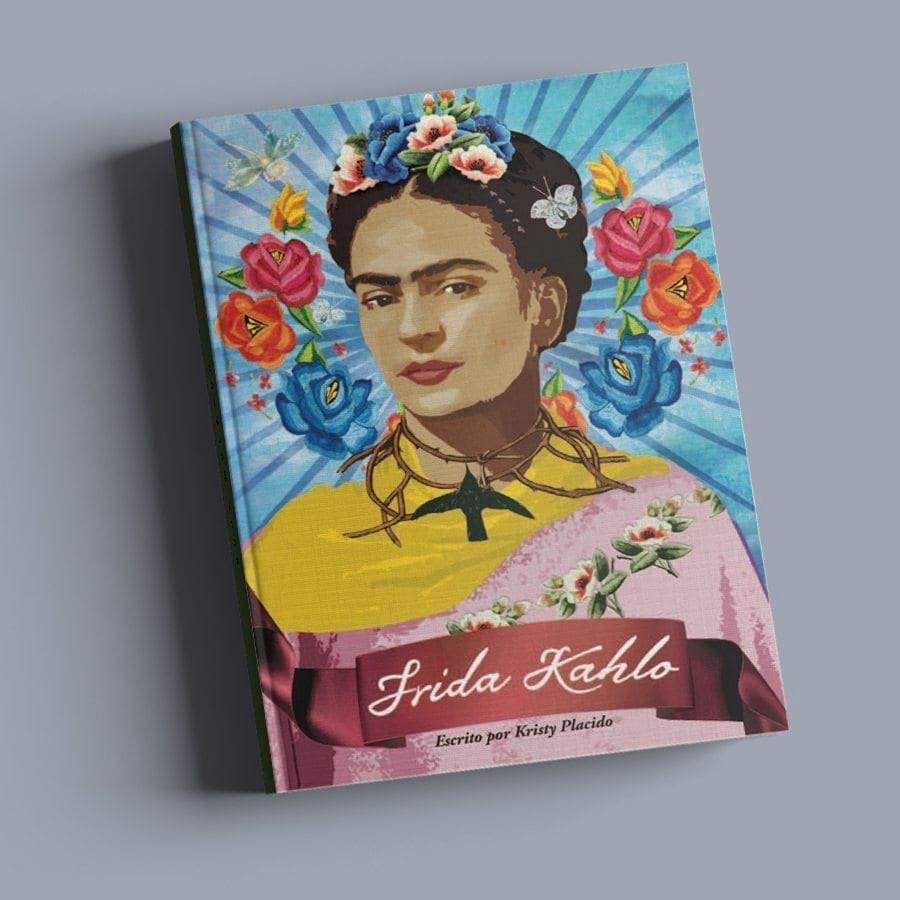Frida Kahlo by Kristy Placido offers a captivating exploration into the life and art of one of Mexico’s most renowned artists. This insightful book delves into the events, influences, and symbolism that shaped Kahlo’s unique artistic style, revealing the profound impact her work has had on art and culture worldwide.
Placido’s writing is engaging and accessible, providing a comprehensive overview of Kahlo’s life and work. Through vivid descriptions and insightful analysis, she unravels the complexities of Kahlo’s personal experiences, her artistic vision, and her enduring legacy.
Frida Kahlo’s Life and Influences

Frida Kahlo’s life was marked by both triumph and adversity. Born in Coyoacán, Mexico, in 1907, she contracted polio at the age of six, leaving her with lifelong physical disabilities. In 1925, she was involved in a horrific bus accident that shattered her spine and pelvis.Despite
her physical challenges, Kahlo pursued her passion for art. She studied at the prestigious National Preparatory School in Mexico City, where she met her future husband, the renowned muralist Diego Rivera. Kahlo’s art was deeply influenced by her personal experiences, Mexican folk art, and the political and social issues of her time.
Diego Rivera and Frida Kahlo’s Relationship
Diego Rivera, a prominent Mexican muralist, played a significant role in Frida Kahlo’s life and work. They married in 1929 and had a tumultuous relationship characterized by both love and infidelity. Rivera’s influence can be seen in Kahlo’s paintings, which often featured large, bold figures and vibrant colors.
Mexican Folk Art and Culture
Frida Kahlo’s art was deeply rooted in Mexican folk art and culture. She incorporated traditional symbols and motifs into her paintings, such as the Virgin Mary, flowers, and animals. Kahlo’s work also reflected the political and social issues of her time, including the Mexican Revolution and the struggle for women’s rights.
Frida Kahlo’s Uniqueness
Frida Kahlo’s art stands out for its raw emotional intensity and unique style. She unflinchingly depicted her own physical pain and suffering, as well as her dreams and fantasies. Kahlo’s work has been celebrated for its honesty, strength, and its ability to transcend cultural and geographical boundaries.
Symbolism and Imagery in Frida Kahlo’s Art

Frida Kahlo’s art is a profound expression of her personal experiences, emotions, and Mexican heritage. She employed symbolism and imagery as powerful tools to convey her complex inner world.
Pain and Suffering
Pain was a constant companion in Kahlo’s life, both physical and emotional. She used images of thorns, wounds, and broken bodies to symbolize her own physical suffering. The vivid red color that often dominates her paintings represents both blood and the intensity of her pain.
Identity and Self-Portraiture, Frida kahlo by kristy placido
Kahlo frequently depicted herself in her paintings, using her own body as a canvas to explore her identity. She portrayed herself in traditional Mexican attire, with a unibrow and mustache, emphasizing her Mexican heritage and challenging societal beauty standards.
Mexican Culture
Kahlo’s Mexican heritage played a significant role in her art. She incorporated elements of Mexican folk art, such as bright colors, floral motifs, and indigenous symbols. By doing so, she celebrated her culture and asserted her national identity.
Frida Kahlo’s Impact on Art and Culture: Frida Kahlo By Kristy Placido

Frida Kahlo’s influence extends beyond her lifetime, profoundly shaping the art world and inspiring generations of artists. Her unique style and unflinching portrayal of personal experiences have resonated with audiences worldwide, fostering a deep appreciation for Mexican culture and identity.
Influence on Subsequent Generations of Artists
Kahlo’s bold self-portraits and surrealist works have influenced numerous contemporary artists, including Leonora Carrington, Remedios Varo, and Chavela Vargas. Her focus on female empowerment and the exploration of pain and trauma have resonated with artists who identify with her struggles and find inspiration in her resilience.
Promotion of Mexican Culture and Identity
Kahlo’s art played a pivotal role in promoting Mexican culture and identity on a global scale. Her depictions of traditional Mexican clothing, customs, and landscapes introduced a unique perspective to the international art scene. Through her work, she celebrated her Mexican heritage and challenged stereotypes, fostering a sense of pride and cultural awareness among Mexicans worldwide.
Frida Kahlo’s vibrant self-portraits offer a glimpse into her complex life. While her art continues to inspire, you may also find inspiration in the financial services offered by TVA Credit Union Lenoir City . Their commitment to empowering individuals aligns with Kahlo’s own journey of self-discovery and resilience.
Frida Kahlo’s Legacy and Continuing Relevance

Frida Kahlo’s art continues to captivate audiences worldwide, transcending cultural and geographical boundaries. Her unique style, raw emotional expression, and powerful depictions of identity and suffering have resonated deeply with viewers for decades.
Reasons for Her Enduring Appeal
- Authenticity and Vulnerability:Kahlo’s art was deeply personal and authentic, reflecting her own experiences of pain, love, and identity. Her willingness to expose her vulnerability has made her art relatable to audiences who feel a sense of connection to her struggles.
- Exploration of Identity and Gender:Kahlo’s work challenged traditional notions of beauty, femininity, and Mexican identity. Through her self-portraits, she explored her own complex relationship with her body, her culture, and her role as a woman in society.
- Artistic Innovation and Symbolism:Kahlo’s unique artistic style, which incorporated elements of Mexican folk art, surrealism, and pre-Columbian imagery, has made her work visually striking and memorable. Her use of symbolism and allegory allowed her to convey complex emotions and experiences in a visually compelling way.
- Timelessness and Universal Appeal:Kahlo’s art speaks to universal themes of love, loss, pain, and identity. These themes transcend cultural and temporal boundaries, making her work relevant to audiences of all backgrounds and generations.
Detailed FAQs
What are the key themes explored in Frida Kahlo’s art?
Kahlo’s art often explored themes of pain, identity, sexuality, and Mexican culture.
How did Frida Kahlo’s personal experiences influence her art?
Kahlo’s art was deeply influenced by her physical and emotional pain, her tumultuous relationships, and her Mexican heritage.
What is Frida Kahlo’s legacy in the art world?
Kahlo is recognized as one of the most influential artists of the 20th century, and her work continues to inspire and resonate with audiences worldwide.